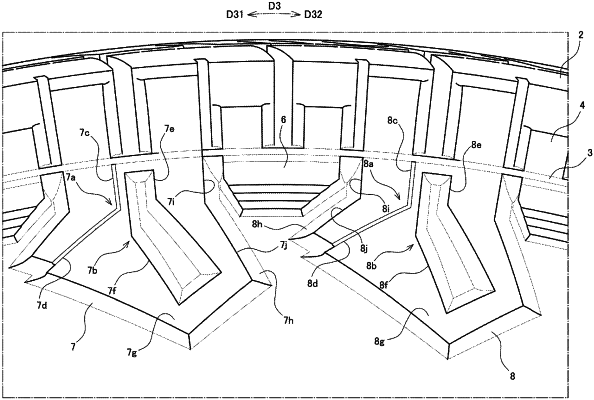| CPC B60C 13/02 (2013.01) [B60C 13/002 (2013.01)] | 19 Claims |

|
1. A pneumatic tire comprising a sidewall extending in a tire radial direction,
wherein the sidewall comprises a first side block which protrudes outwardly in a tire axial direction from a surface of the sidewall,
wherein the first side block comprises a first region which is arranged at an inwardmost location in the tire radial direction of the first side block, a second region which is contiguous with a location toward an exterior in the tire radial direction of the first region, a third region which is contiguous with a location toward an exterior in the tire radial direction of the second region, and a fourth region which is contiguous with a location toward an exterior in the tire radial direction of the third region,
wherein the second region protrudes more than the first region,
wherein the third region protrudes more than the second region,
wherein the fourth region protrudes more than the third region,
wherein the first region includes a first apex and a first lateral face connecting the first apex to the surface of the sidewall, the second region includes a second apex and a second lateral face connecting the second apex to the first apex, the third region includes a third apex and a third lateral face connecting the third apex to the second apex, and the fourth region includes a fourth apex and a fourth lateral face connecting the fourth apex to the third apex, and
wherein the first side block further comprises:
a first step formed by the first apex and the first lateral face to position the first region at a greater height than the surface of the sidewall;
a second step formed by the second apex and the second lateral face to position the second region at a greater height than the first region;
a third step formed by the third apex and the third lateral face to position the third region at a greater height than the second region; and
a fourth step formed by the fourth apex and the fourth lateral face to position the fourth region at a greater height than the third region.
|